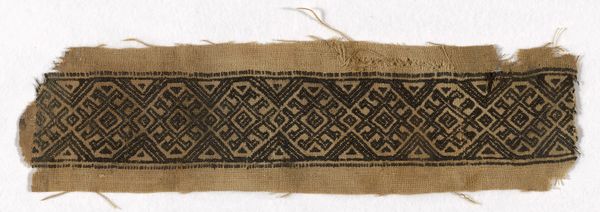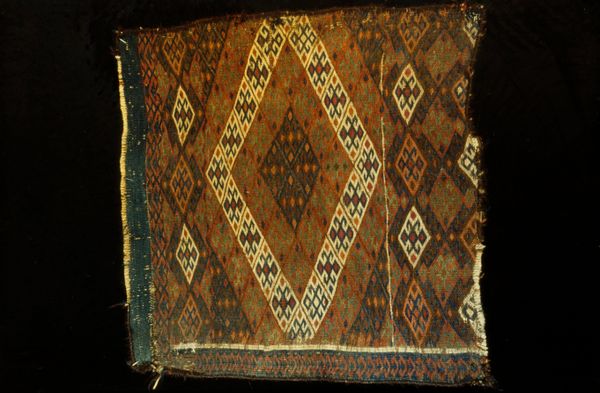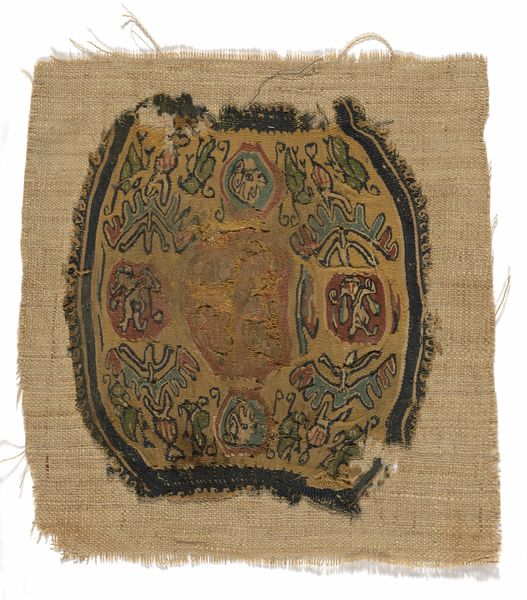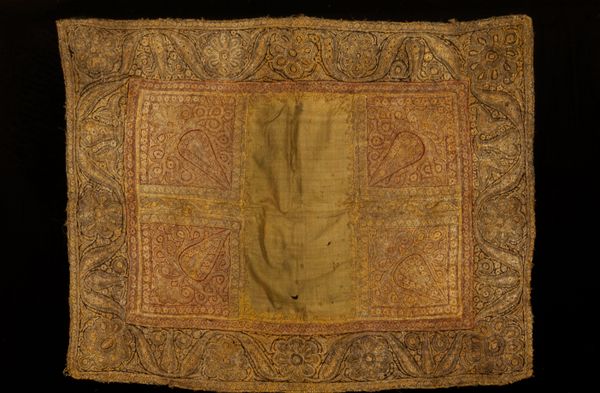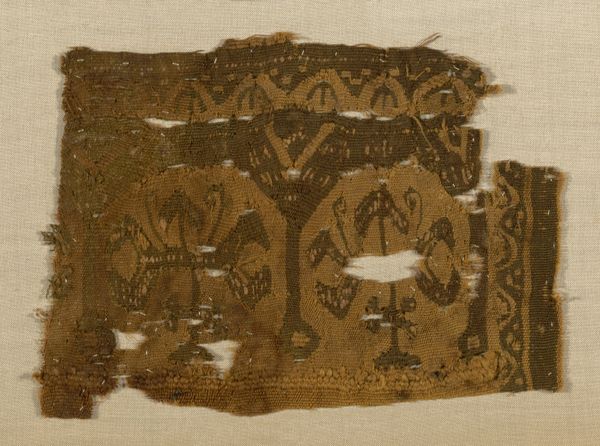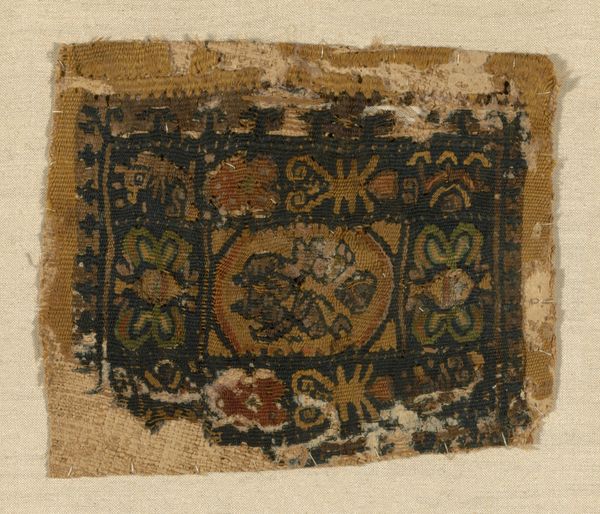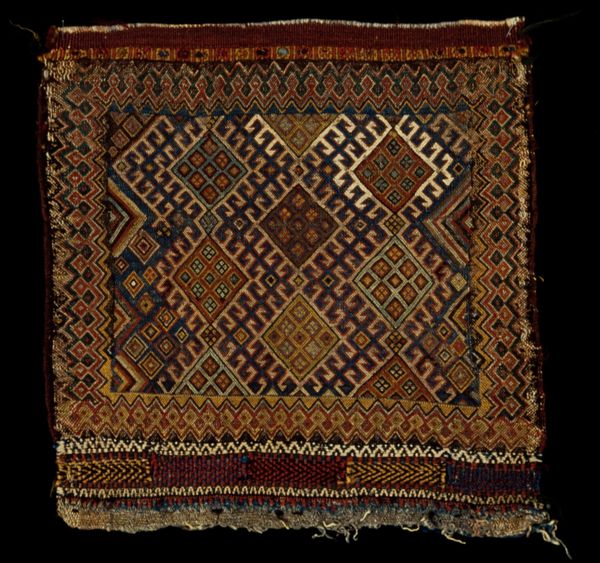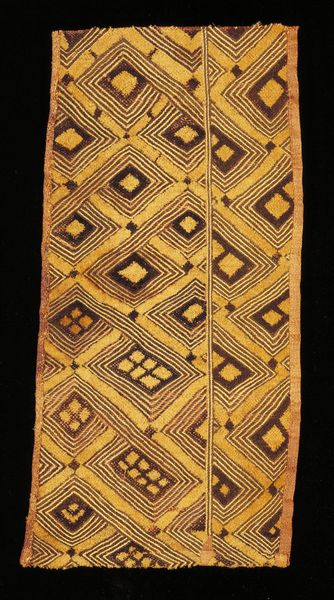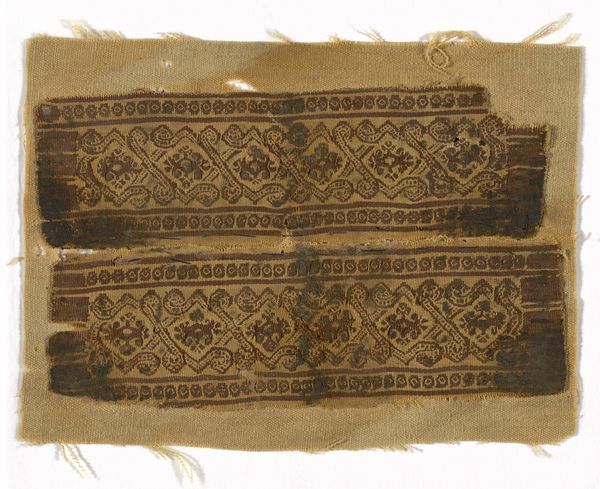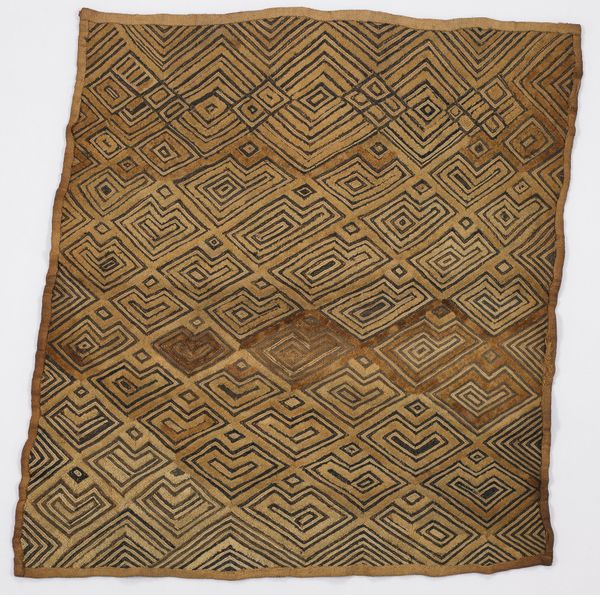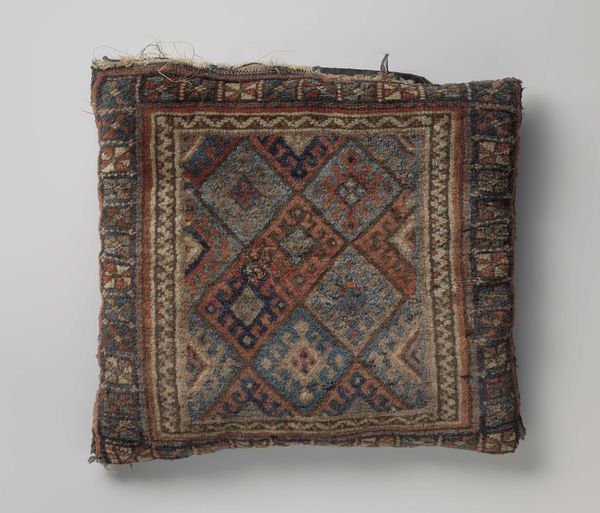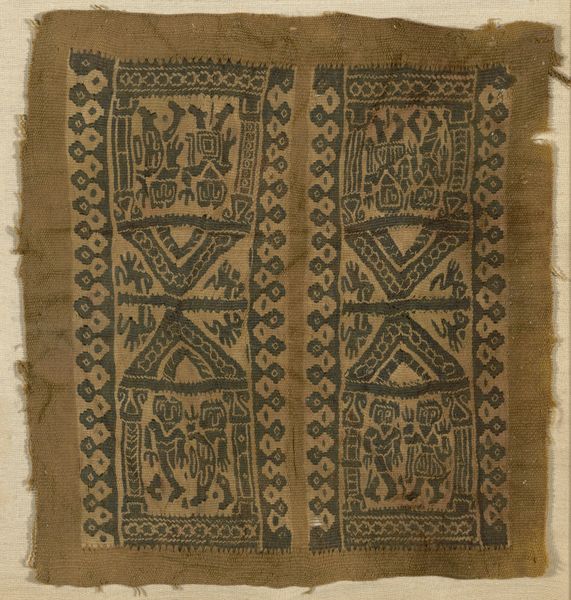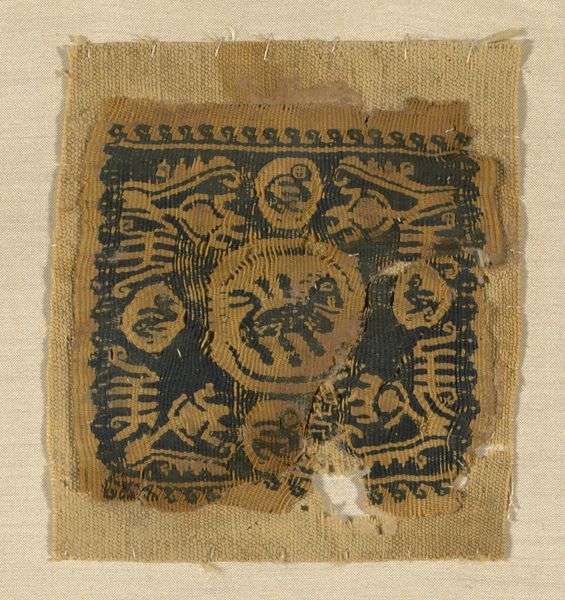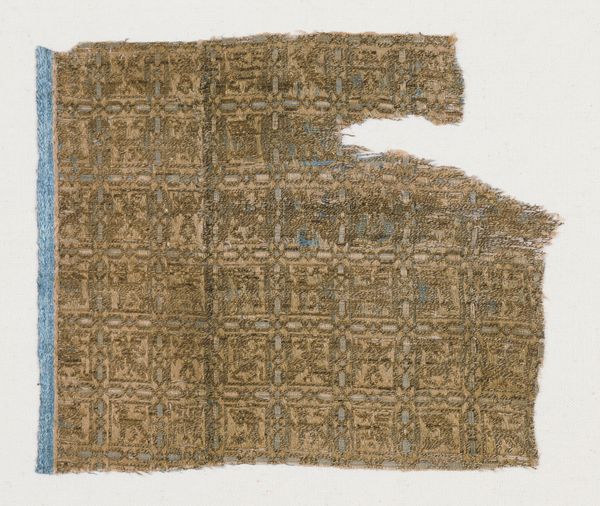
fibre-art, weaving, textile
#
fibre-art
#
weaving
#
textile
#
geometric
Dimensions: 20.2 × 20.5 cm (7 7/8 × 8 in.)
Copyright: Public Domain
Editor: Here we have a Coptic textile panel, dating from the 3rd to 5th century AD, made of wool. The abstract geometric patterns and muted colors give it a solemn and antique character. What meaning can we draw from its repeating motifs? Curator: This panel is brimming with echoes. The geometric patterns are not merely decorative. The repeated shapes resonate with a need to create symbolic forms—circles, squares, crosses. These specific motifs evoke ancient cosmologies. Look closely; can you sense how the arrangement seeks to reflect a greater, perhaps divinely ordained, order? Editor: That’s interesting. So, it's more than just design? Curator: Precisely! The very act of weaving itself could have held symbolic weight, each thread a representation of fate or destiny intertwined. Do you think the fragmentation that we see adds a layer to our understanding of memory in Coptic art? Editor: It's as if the textile embodies a history of beliefs and worldviews, each interwoven and weathered with time. The fragment becomes, paradoxically, complete in its incompleteness. Curator: A powerful thought. These surviving panels act as tangible connections to belief systems and modes of living from a distant era. Through analyzing their iconography, we see the ongoing search for order and meaning throughout the ages. Editor: I see what you mean now, the design hints to the spiritual dimension embedded in everyday life, and its fragmented condition only emphasizes the ephemeral nature of material culture. Curator: Absolutely, the visual vocabulary acts as an intriguing mirror to reflect human memory, a testament to time and a visual experience transcending ancient beliefs.
Comments
No comments
Be the first to comment and join the conversation on the ultimate creative platform.
